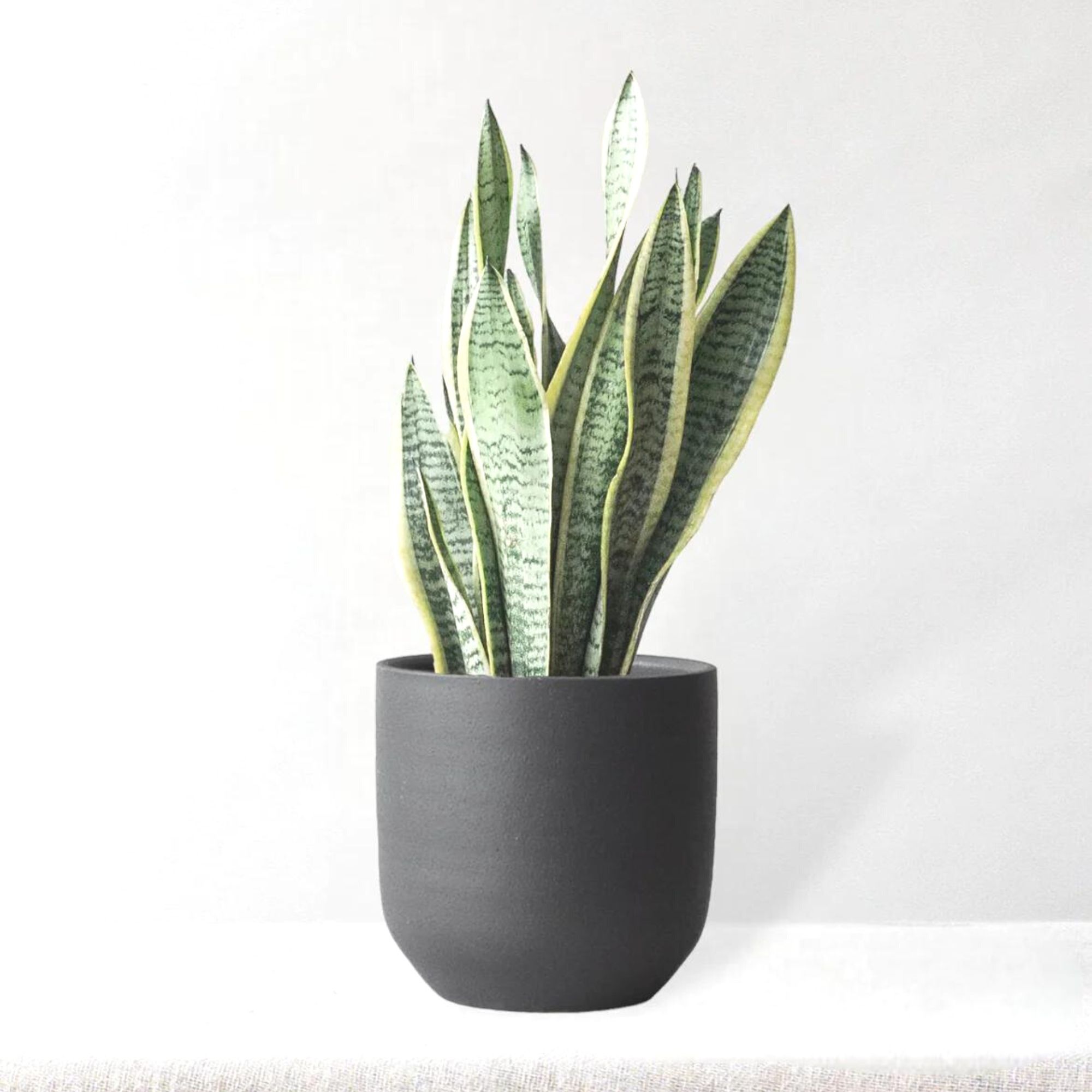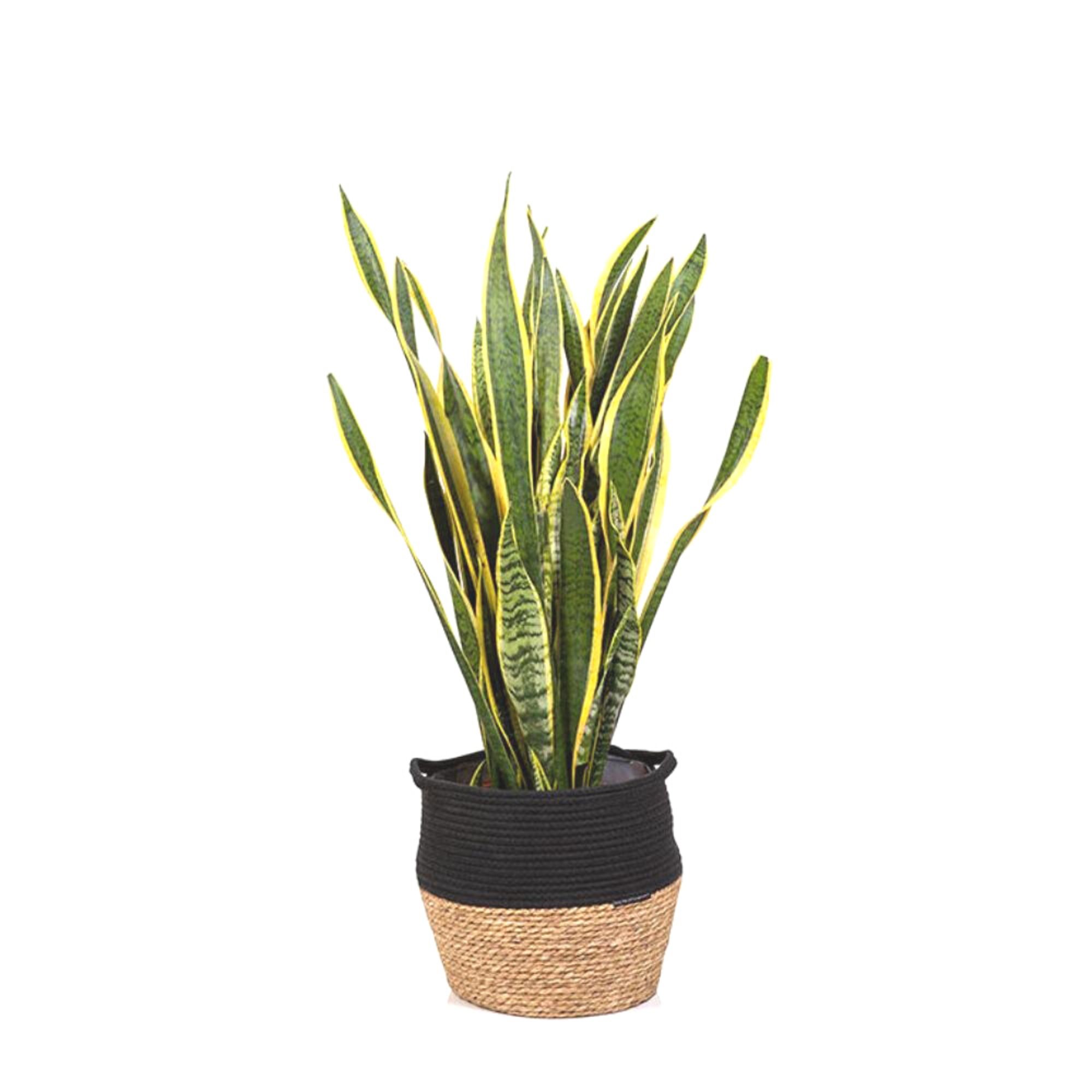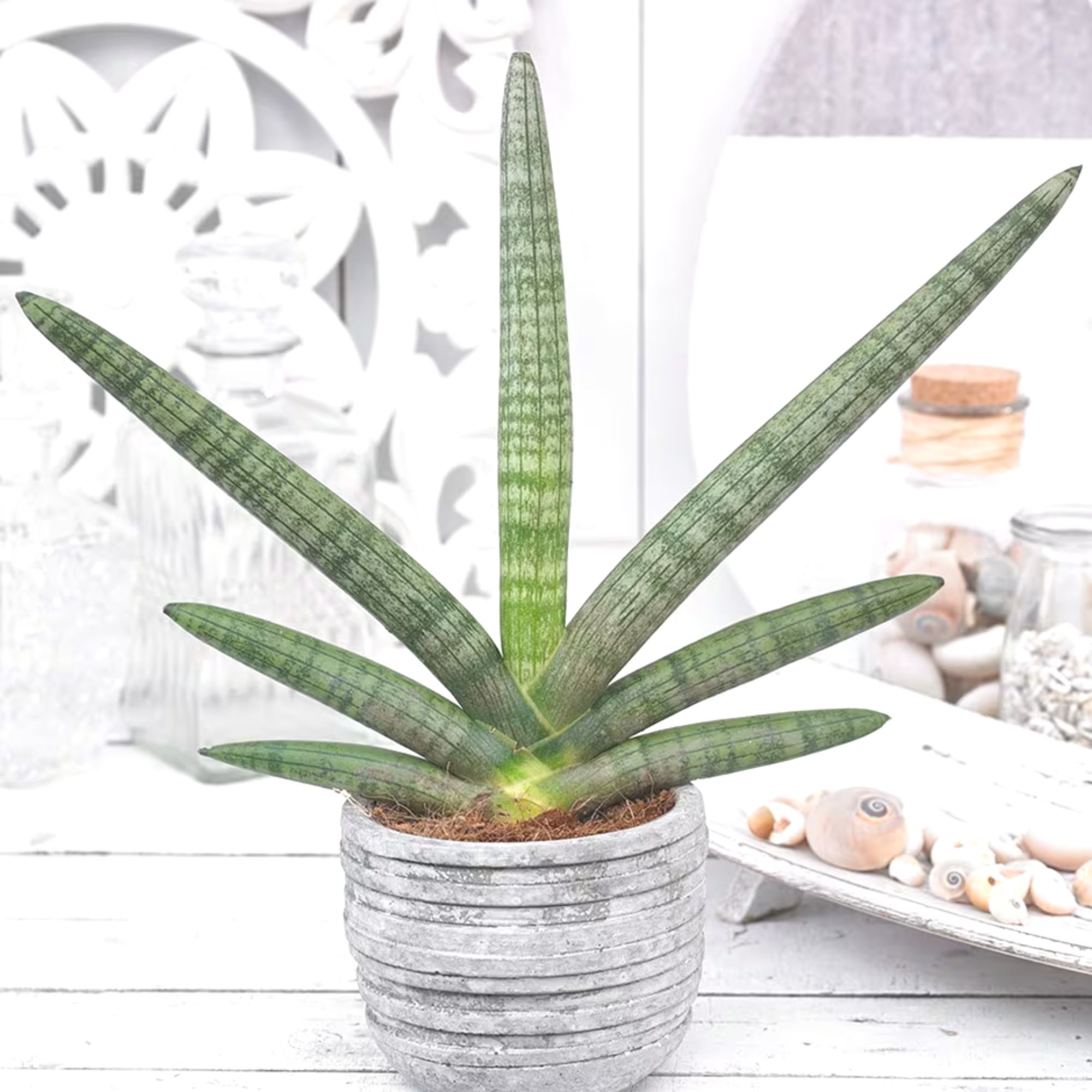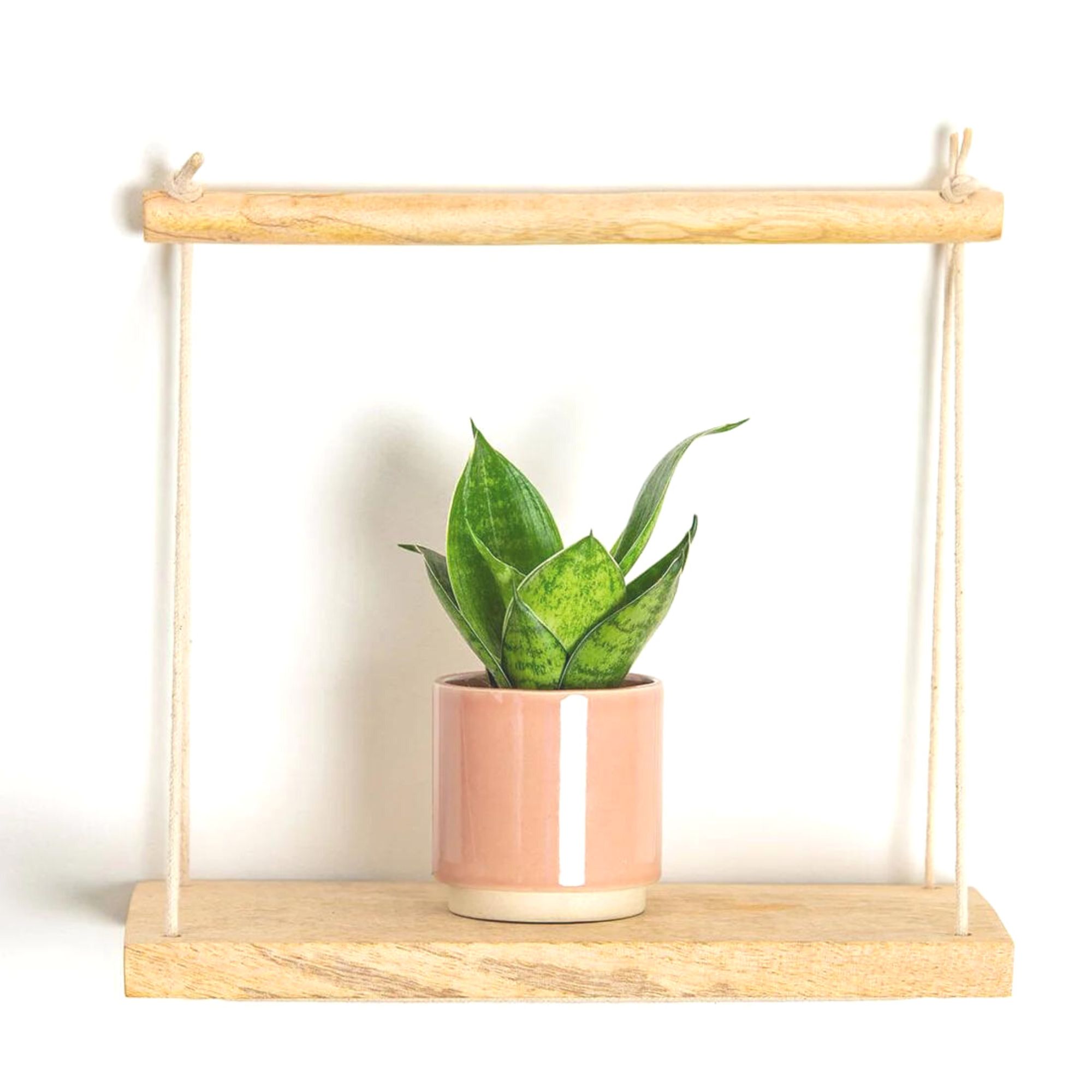How to care for a snake plant – the houseplant anyone can keep alive
Discover how to care for a snake plant – the almost unkillable houseplant

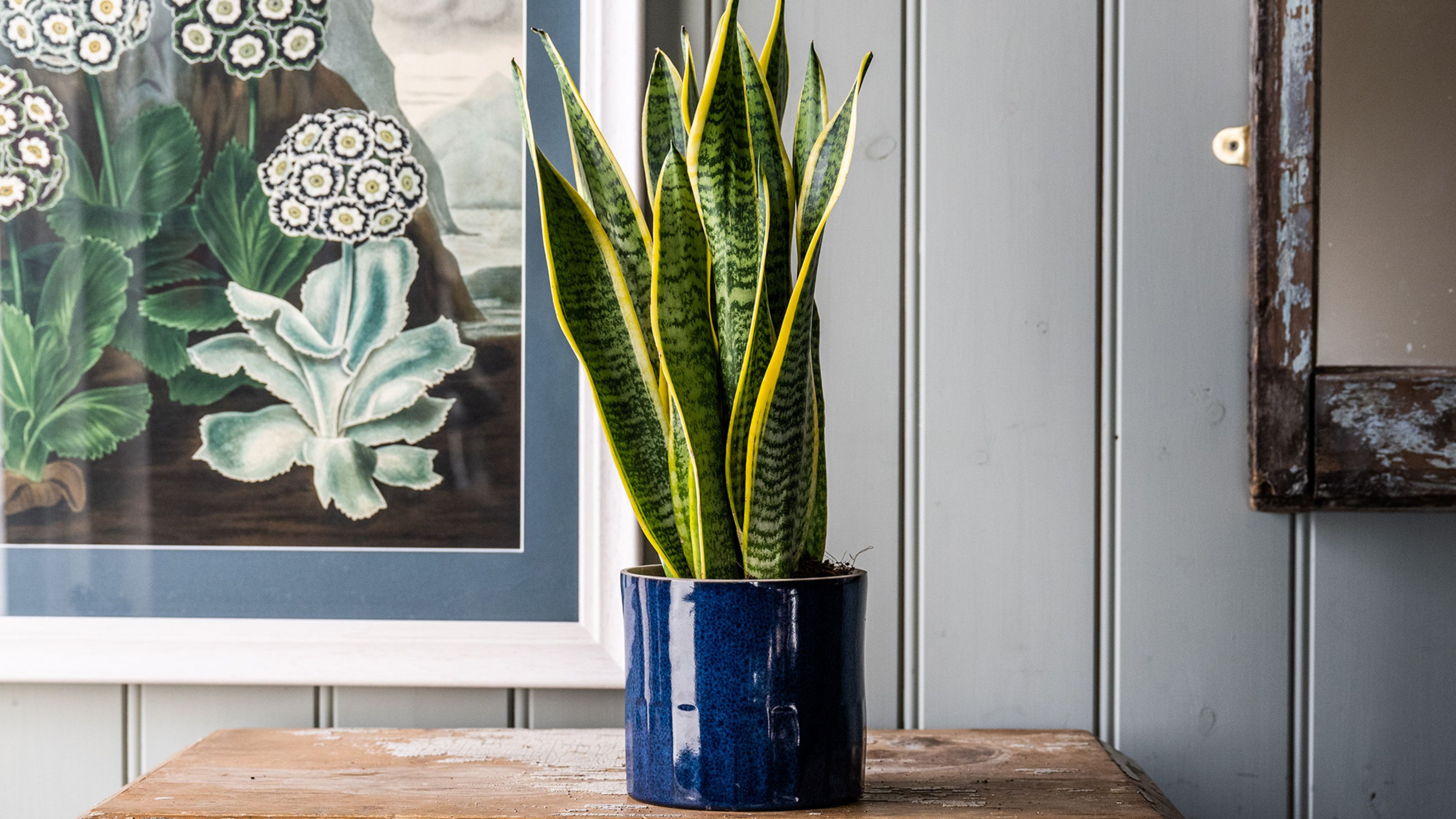
Incredibly easy to look after, a snake plant is often people’s first foray into the world of houseplant husbandry.
If you're looking for a new addition to your house plant ideas, then a snake plant is perfect. Also known by its Latin name, Dracaena trifasciata; species name, Sansevieria; or its colloquial name, Mother-in-Law’s Tongue, this plant is characterised by its vertically growing leaves which feature a light and dark green scale-like pattern with light-green to yellow edging.
'These plants are survivors even if you are a self-confessed “plant killer”. Caring for your Snake plant is easy as it only needs to be watered once every few weeks – overwatering can be the Snake plant's kryptonite!' says Morag Hill, co-founder of The Little Botanical.
Morag Hill is the Co-Founder of The Little Botanical. Established in November 2017, The Little Botanical is a family-run business that combines its expertise in horticulture with stylish and contemporary design flair to create a versatile and high-end collection of indoor plants with 70% of its plants grown in their nursery in West Sussex.
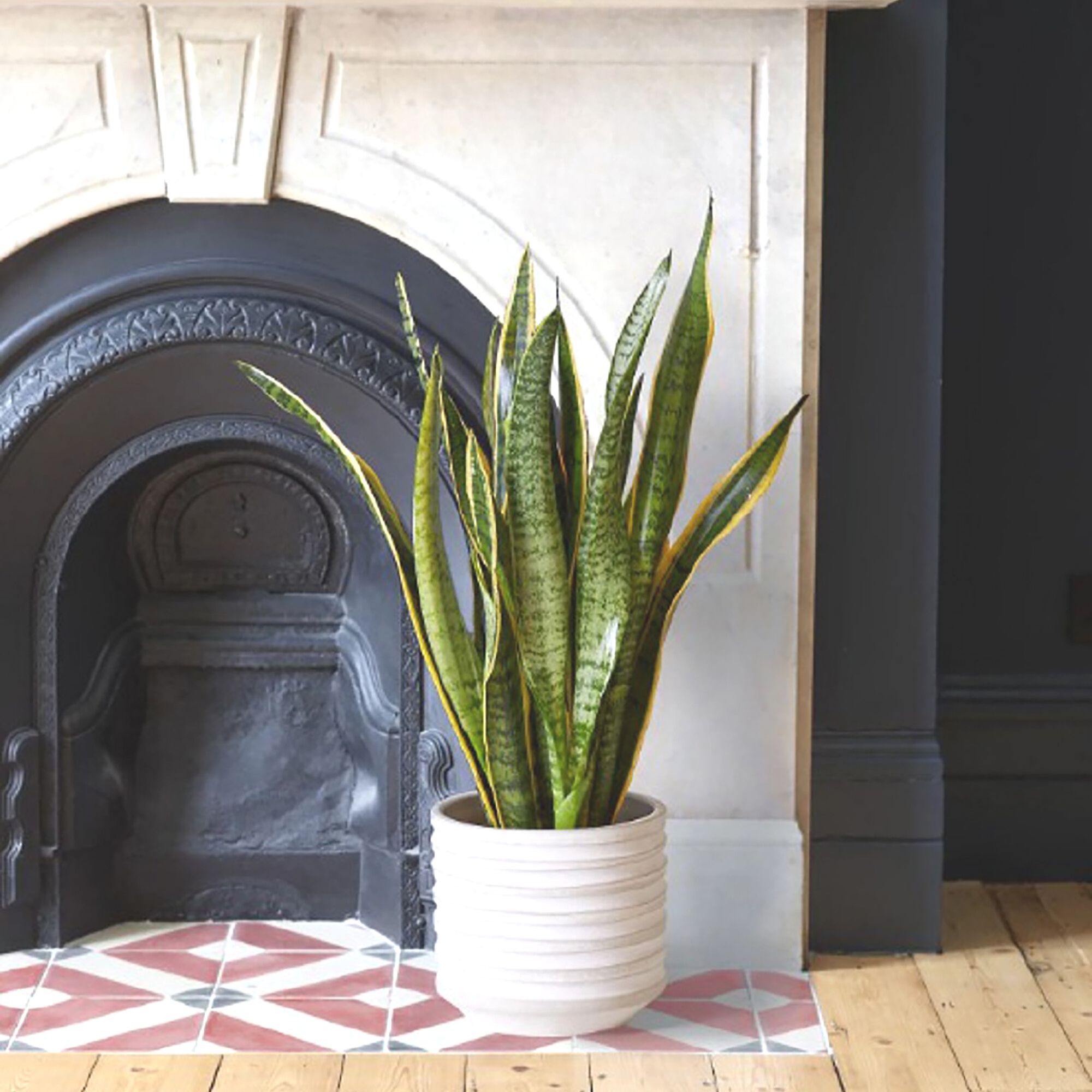
What you will need
- Snake plant – sometimes called Dracaena trifasciata; Sansevieria; Mother-in-Law’s Tongue
- Plastic pot with drainage holes – one size larger than the size of the plant bought
- Decorative pot without holes
- A liquid houseplant fertiliser, for example, Baby Bio Houseplant Fertiliser on Amazon
- A trowel
- Houseplant compost, such as Westland Houseplant Potting mix on Amazon
Where to buy snake plants
Whether looking for living room house plant ideas or have fallen in love with the most Instagrammed house plants, it is important to buy your snake plants from reputable companies – this will ensure that your plant will be healthy and will reduce the risk of you bringing pests into your home.
Where should I keep my snake plant at home?
Unlike lots of other houseplants, snake plants can survive in lower-light levels – this makes them one of the best houseplants for low-light. This gives you plenty of flexibility in where you can place your potted beauty. While no plants will survive in the dark, a snake plant can cope with more shaded spots and does not need to live on the windowsill. However, if you have pets or young children, snake plants can be toxic if eaten so it is best to place them out of reach.
The bedroom is a popular room for a snake plant. ‘Not only do snake plants remove toxins from the air but they can help improve the quality of sleep by producing oxygen at night and removing carbon dioxide. This can result in more restful and refreshing sleep,’ says Beth Chapman from Leaf Envy. For this reason, they are one of the best houseplants to boost wellbeing.
‘Just one snake plant per 100 square feet can improve air quality significantly. They can remove toxins and pollutants from the air, such as formaldehyde, benzene, and xylene.’
Sign up to our newsletter for style inspiration, real homes, project and garden advice and shopping know-how

Beth started Leaf Envy doing pop-ups on her sisters' canal boat along Regents Canal. She joined Google for StartUps Female Founder program in 2019, and has since transformed her business into in a flourishing company, selling a wide variety of different plants along with sharing her expert advice for their care – perfect for budding plant parents and established fanatics alike.
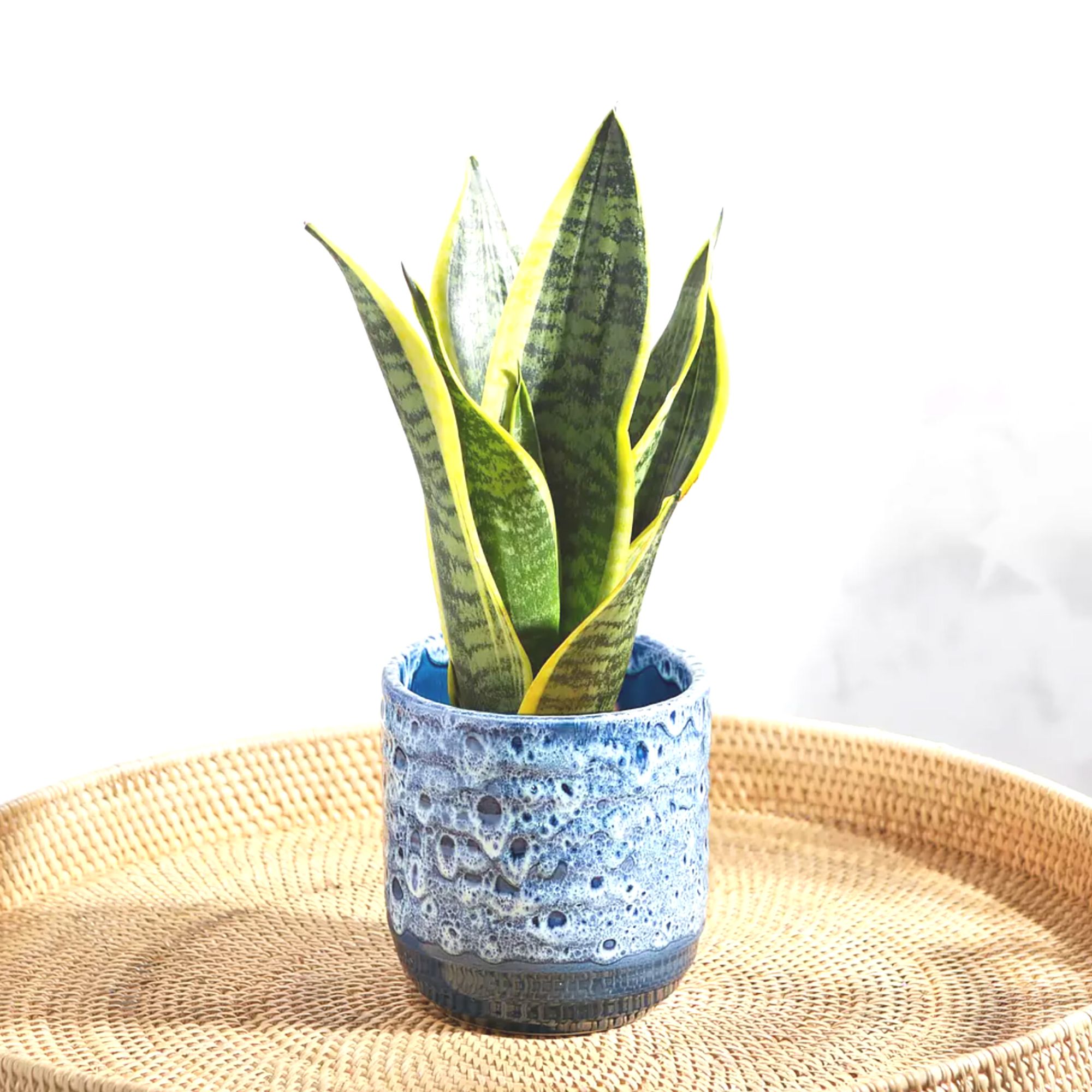
How often do you water a snake plant?
You should water a snake plant roughly once a fortnight. Snake plants are very easy to care for houseplants – they are perfectly low maintenance as they don’t need lots of water.
Since snake plants prefer drier conditions, it is important that they never sit in water as this will cause root rot. ‘Reduce the watering in winter, let the compost remain dry for longer periods and don’t soak the compost - just place a little in the plant saucer and make sure it all disappears within a few minutes,' explains Beth Chapman.
It is worth noting that overwatering is one of the main causes of failure.
How do I know if my snake plant needs water?
The best way to know if your snake plant needs water is to pick it up.
Before watering, check if the compost is dry by picking up the pot, if it feels light, then it is likely that it will need water,’ says Angela Slater, gardening expert at Hayes Garden World. ‘To water, plunge the entire pot – stopping before the water reaches the crown of the plant – into a bucket of tepid water until no more bubbles rise to the surface. Take out of the water and stand on the draining board until all the excess water has drained away.’

Angela holds a degree in Conservation and Land Management and has had an active interest in gardening since the age of six. Angela was consistently outdoors from a young age, helping her father out in the garden who would grow his own vegetables. Ever since leaving home at age 18, Angela has always had houseplants, herbs and sprouting seeds on the windowsill. She now owns a smallholding where she grows a selection of vegetables and soft fruit.
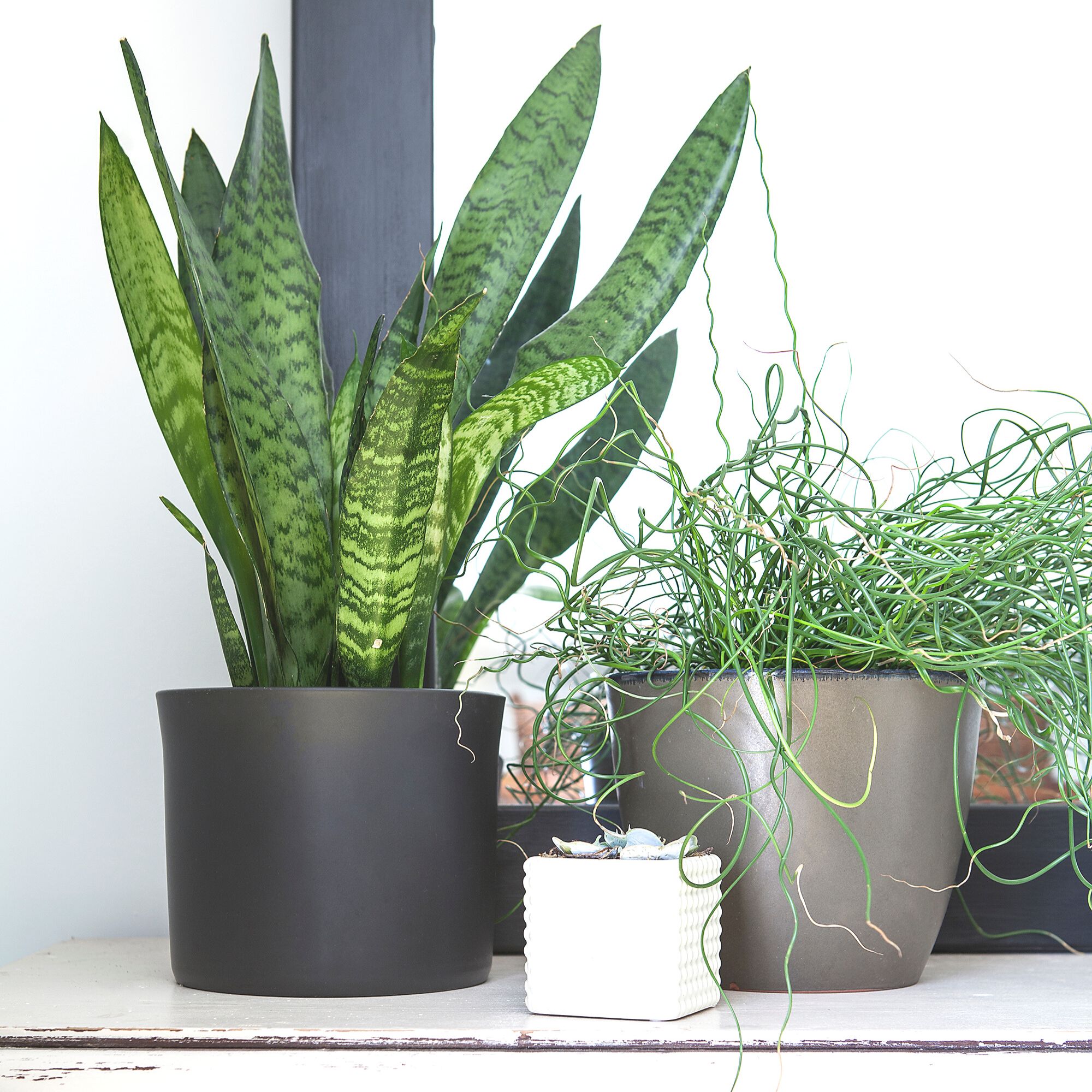
When should I repot a snake plant?
‘Snake plants prefer to be snug in their pots, and often won’t produce flowers unless they feel the stress of being root bound. However, if you hold off on repotting for too long it can be detrimental to the health of the plant. Signs that your snake plant is ready to be moved into a larger pot include leaves rotting from the base of the plant, roots growing on the surface of the soil or through the drain holes, and water running through the pot too quickly,’ says the experts at BabyBio.
Be sure that when you repot your plant, you place it in a slightly shadier spot for a few days, in order to avoid one of the most common houseplant repotting mistakes.
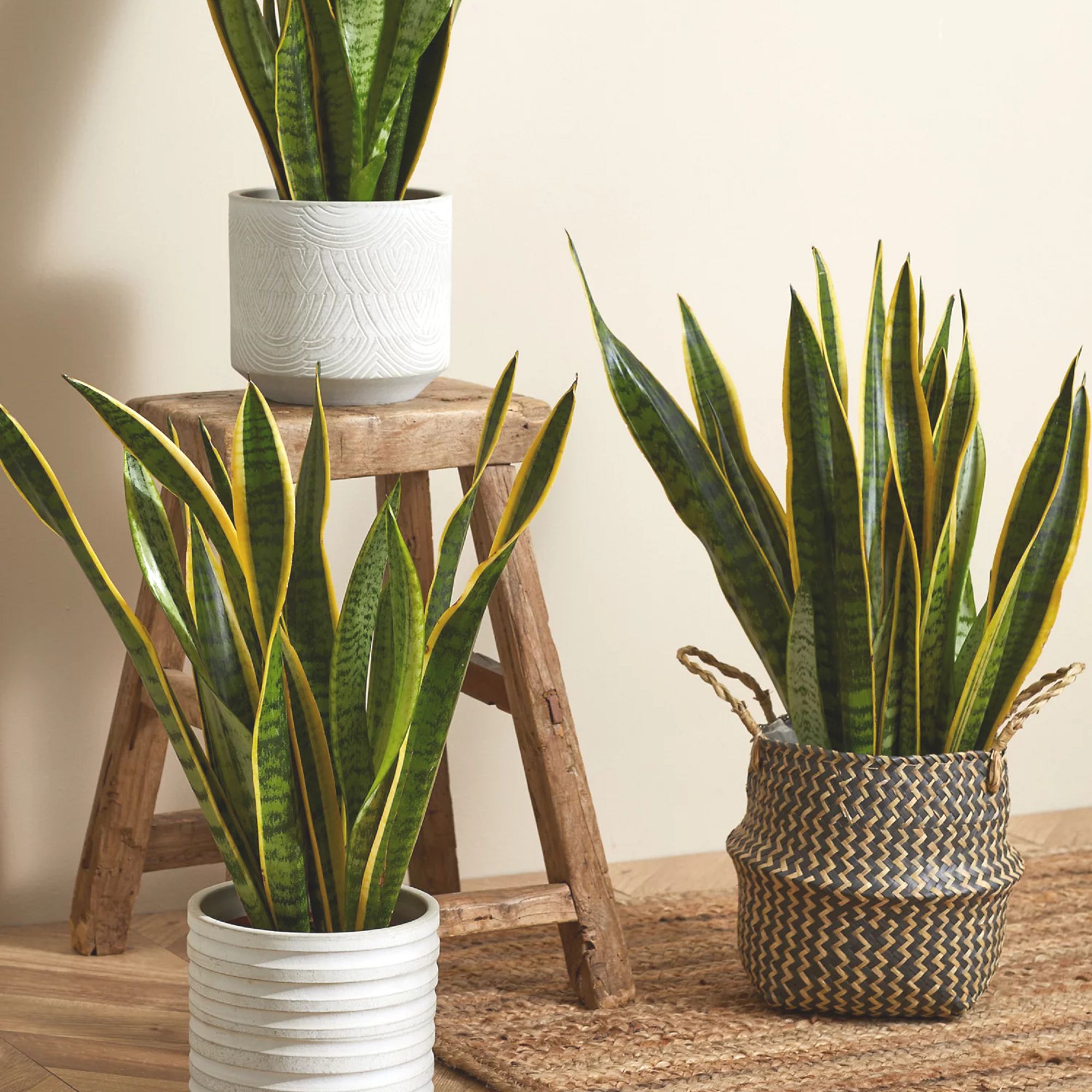
How often do you feed snake plants?
According to Feng Shui, snake plants are one of the luckiest houseplants.
Keep your snake plant healthy by regularly feeding. ‘A month after planting, your snake plant is going to be hungry for some extra nutrition. Assuage its appetite instantly with a plant food such as Miracle-Gro succulent plant food, making sure to follow the label directions. Use 2 pumps for small pots and 5 pumps for larger pots (over 6” diameter),’ says experts from Miracle-Gro. Be sure to follow the instructions carefully as too much fertilizer can burn the roots and could kill the plant.
Do I need to dust my snake plant?
Another key step to snake plant care is dusting. ‘It is also important to wipe the leaves every now and again to prevent the pores becoming blocked with dust,’ adds Angela Slater, gardening expert at Hayes Garden World. This will also ensure that your plant can absorb enough light to effectively photosynthesise.
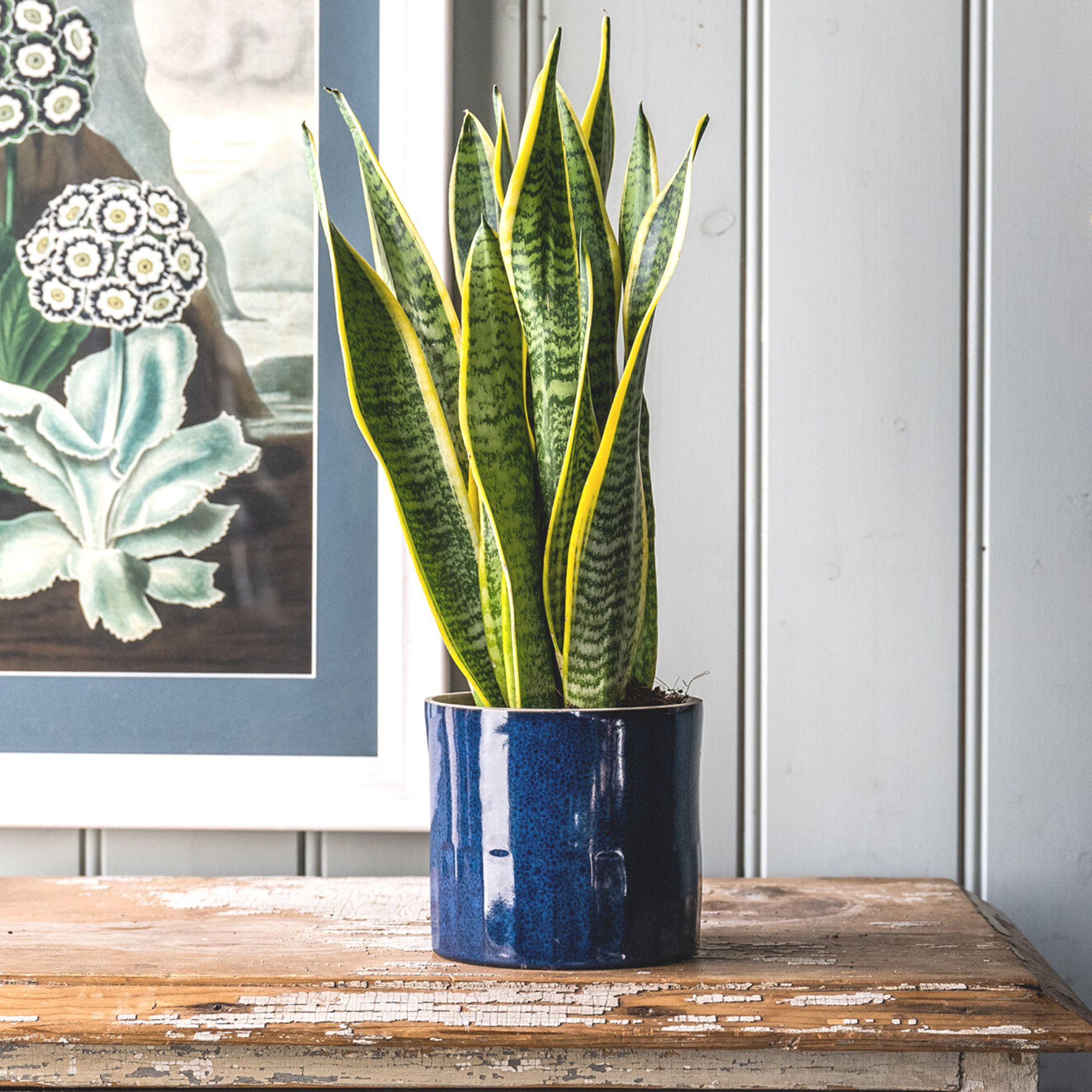
Can snake plants be propagated from cuttings?
You can never have too many houseplants and propagation is a great way to grow your collection for free. However, your plant needs to be well established before you give propagation a go – otherwise, you might risk the health of the original plant.
Morag Hill, co-founder of The Little Botanical talks us through the steps:
- Select a leaf that is at least 15cm (6 inches) and remove it from the plant.
- Cut the leaf into three equal sections, all at least 5cm in length.
- Place the cuttings, cut down, in lukewarm water, until 3cm of root growth has sprouted.
- Snake plants are very slow growing so it could take up to two months for your snake plant to sprout roots.
- Once your cutting has a good root system, they are ready to plant in well-draining soil
- Provide your cutting with a bright, indirect place to grow with relatively moist soil, and allow the top half to dry out in between waters.
- You’ll know if propagation has worked because the main body will stay green and firm.
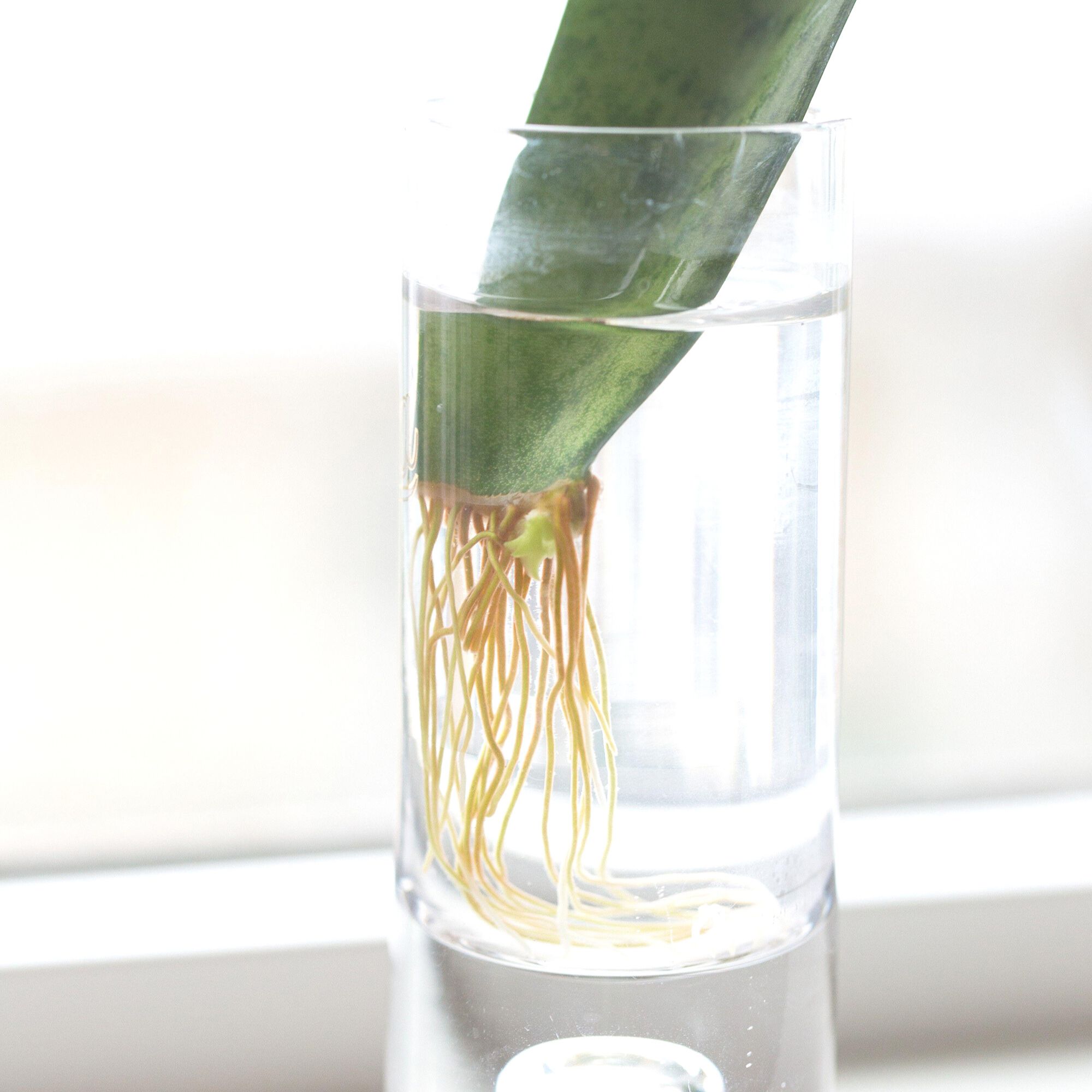
How do I know what's wrong with my snake plant?
Yellow leaves – this is a sign that your plant is being over-watered. Allow all water to drain away and then wait until the first two inches of soil are dry to the touch before rewatering.
Leaves easily pull away from crown – ‘This means that the plant
is rotting,’ reveals Angela Slater, gardening expert at Hayes Garden World. ‘If this is the case, take the plant out of the pot and pull away as much of the sodden compost as possible and then repot in fresh, dry compost and keep your fingers crossed that it is not too far gone to recuperate.’
Leaves start to wrinkle – this is a sign that the snake plant is lacking water. Submerge in a bucket of water until the bubbles stop. The leaves should become plump again once watered.
Mealybugs – ‘If you see fluffy white cotton wool-like specs on the underside of the leaves, it will be mealybugs and they need wiping off with a piece of cotton wool soaked in an eco-friendly insecticide,’ adds Angela Slater.
Variegated variety turns green – the plant isn’t receiving enough light, move to a brighter spot in the room

Holly is one of Ideal Home’s content editors. Starting her career in 2018 as a feature writer and sub-editor for Period Living magazine, she has continued this role also adding regular features for Country Homes & Interiors and the Ideal Home website to her roster. Holly has a passion for traditional and country-inspired interiors – especially kitchen design – and is happiest when exploring the countryside and hills of the Lake District. A keen gardener, she is a strong believer that you can never have too many houseplants.
